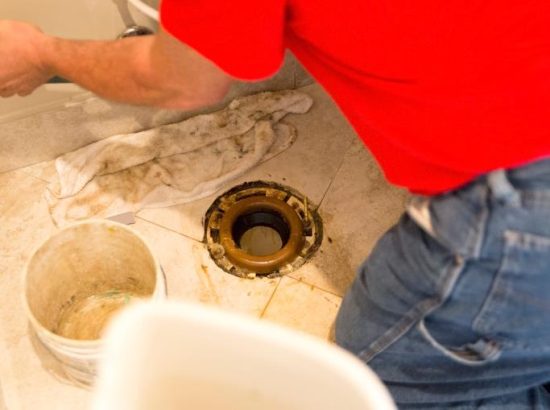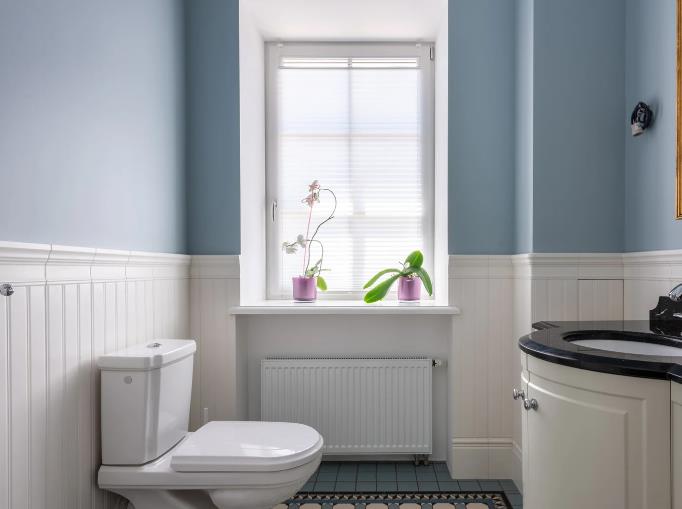When it comes to home renovations or replacements, understanding the cost of essential fixtures is crucial. A common query that surfaces during such discussions centers on how much is a toilet costs. This blog will enter into various aspects of toilet costs. It will break down the price by components and factors influencing the overall expenditure.
Factors Affecting the Cost
The cost of a toilet can depend on various factors, including the materials used and the specific facilities included. Toilets made of higher-quality materials, like vitreous China or premium porcelain, usually cost more because of their superior finish and longevity. Furthermore, toilets with distinctive or contemporary designs—particularly those with unusual colors or shapes—typically have higher price tags. Technological improvements heavily influence pricing; touchless flushing, self-cleaning capabilities, and heated seats are just a few features that drive up costs.
Additionally, well-known businesses with a solid reputation for dependability and performance could charge more for their goods. Its because of their consumer trust and market standing. Another important consideration is water efficiency. The dual-flush toilets and other water-saving features initially cost more, they can save significant money on water costs over time.
The installation procedure itself can also impact costs since higher overall costs may result from the requirement for extra plumbing modifications or expert installation services. Toilet prices are also influenced by market demand; seasonal patterns and home renovation fads frequently impact prices. Another factor to consider is geographic location; due to local economic conditions, product availability, and transportation costs, prices can vary significantly by region.
Lastly, regulatory compliance with water usage or disposal standards might lead to additional costs for certification and design adaptations, making some toilets more expensive. Each factor contributes to the overall cost of purchasing and installing a toilet, reflecting a complex interplay of materials, technology, and market dynamics.
How Much Is a Toilet? – Break down the cost
How Much Is a Toilet Seat?

The toilet seat is a crucial part often overlooked until a replacement is required. Toilet seat costs vary based on features and materials. While basic plastic chairs are inexpensive, ones equipped with features like heating and bidet functions can cost significantly more. The decision is frequently based on the desired comfort level and personal taste.
Furthermore, some toilet seats are made of eco-friendly materials or have antimicrobial coatings, which can significantly affect the cost. Although most versions of these chairs are easy to install, more complicated models would need expert assistance, raising the final price. Another thing to consider is durability; more expensive seats are typically covered by extended warranties and are built to last regular use without breaking down quickly.
A new toilet seat can cost consumers anywhere from $15 to $200. While seats with advanced amenities like heating, bidet capabilities, or intelligent technology can range from $100 to $200, depending on their sophistication and the grade of materials used, the most basic ones typically cost between $15 and $50.
How Much Is a Toilet Bowl?
The central part of the toilet is the bowl, whose price is determined by the material and design used in its construction. Due to its longetivity and ease of cleaning, porcelain is a famous and generally moderately priced material. Expensive models could have unique materials and designs, which raises the price. A higher price may also be attributed to extra features like comfort-height designs or dual-flush technology. Pricing may also be impacted by the bowl’s color and finish, with unique hues and finishes fetching a higher price. Furthermore, the market’s shift toward water- and eco-efficient models means toilet bowls with contemporary technologies may cost more. Durability and easy keeping are also vital considerations that can impact cost.
Toilet bowls cost an average of $80 to $500. Basic porcelain models usually cost between $80 and $150, but depending on their features and efficiency, more complicated designs or ones constructed with higher-quality materials can easily cost between $200 and $500.
How Much Is a Toilet Flange?

A toilet flange joins the drainpipe and toilet bottom. Toilet flanges are inexpensive, but they are essential to prevent leaks and ensure that the toilet works properly. PVC, rubber, and metal are the common materials used to make flanges, and their costs vary slightly based on their size and composition. The material selection can influence the lifetime and compatibility with various plumbing systems, with metal flanges often offering more endurance than PVC or rubber. Installation complexity can also impact costs, particularly if a different layout for the flange installation is required or if the current piping needs to be adjusted.
In addition, the cost of sure flanges may increase due to additional features like corrosion resistance or additional seals. Selecting a well-fitting flange for your toilet type is crucial to guarantee a tight seal and avoid any possible water damage. Toilet flanges typically cost between $5 and $45. At the lower end of this price range are essential PVC flanges, which usually cost between $5 and $20, while more expensive metal or specialty flanges with extra features can cost anywhere from $20 to $45. Depending on the brand and particular product features, this pricing may change.
How Much Is a Toilet Flapper?
One important part that regulates the water flow from tank into the bowl during flushing is the flapper. Although flappers are usually not expensive, investing in high-quality ones can save time by minimizing water waste and the need for frequent repairs. Flappers made for particular systems could cost more. Flappers come in various materials, including plastic, silicone, and rubber, and each has unique advantages in terms of resilience and suitability for a range of water conditions. To improve efficiency, certain flappers are also made with features that can be adjusted, allowing you to regulate how much water is flushed each time.
Additionally, eco-friendly flappers that help reduce overall water usage are becoming more popular but may carry a slightly higher price tag. When selecting a flapper, it’s essential to ensure that it matches the specifications of your toilet model to provide adequate sealing and performance. On average, toilet flappers cost between $5 to $50. Basic models typically range from $5 to $15. At the same time, more advanced or specialized flappers, such as those compatible with high-efficiency toilets or those made from more durable materials, can cost between $20 and $50.
How Much Is a Toilet Installation?
Removal of the Old Toilet
The old toilet must be carefully disconnected from the plumbing system and removed as the first step in the installation process. The water supply needs to be turned off and sealed to avoid leaks during the removal. Care must be taken when removing the unit to prevent harm to the bathroom flooring or plumbing. Another factor that could incur extra costs is appropriately getting rid of the old toilet once it has been removed.
This step ensures that any issues from earlier configurations are resolved and the space is ready for a fresh installation. This can run you between $50 and $100, depending on where you live and how complicated the removal is. This price covers labor as well as any waste disposal-related costs. Appropriate disposal is essential to prevent issues later on and guarantee. Proper removal is crucial to avoid future problems and ensure a smooth installation of the new toilet.
Site Preparation
Setting up the installation site comes next after the old toilet has been removed. This involves appropriately cleaning the area to guarantee no debris obstructing the installation. The stability of the new toilet depends on the floor’s level and dryness, which must be examined. If new parts are required, the cost of repairing or replacing any damage to the current flange may increase.
Correct site preparation avoids leaks and problems with the latest installation’s alignment. The price range for site preparation might vary, usually between $20 and $50, depending on the need for extra materials or minor plumbing repairs. Preparing the site properly significantly impacts how long the new toilet works and how effective it is.
Installation of the New Toilet
The process that requires the most labor is installing the new toilet. It entails appropriately positioning the toilet, fastening it to the ground, and ensuring the wax ring and flange create a tight seal. The tank must be mounted and checked after the bathroom is linked to the water supply.
Checking for leaks and ensuring the water flow and flushing mechanism operate correctly is crucial. An adequately fitted toilet will work effectively and not have problems like leaks or wobbly seating. Installing a system might cost anywhere from $100 to $200, depending on the area and the job’s intricacy. The expert installation gives you peace of mind and lowers the possibility of future issues by guaranteeing that everything complies with the code and functions as it should.
Plumber Costs and Professional Installation
The professional plumber expenses can differ significantly depending on the work’s location and intricacy. Labor rates are often greater in urban areas than in rural ones. Costs can also increase with installations that call for additional plumbing adjustments or when dealing with unusual configurations. Hiring an expert is advised to guarantee that the installation complies with local plumbing codes, which is essential for functioning and legal compliance.
To further enhance their services, licensed plumbers can provide warranties for their labor—professional installation labor costs typically between $150 and $300. They are getting the toilet professionally installed, guaranteeing it is put correctly, and protecting it against future problems that could require expensive repairs.
Overall Cost Considerations
The cost of toilet installation encompasses several factors, from removal to professional labor. To properly budget for a new toilet installation, it’s critical to consider each of these phases. The overall cost often ranges from $320 to $650 when all phases are included. This range guarantees a thorough installation process, encompassing everything from the first unit removal to the last unit checks. Toilet installation can be more affordable and feasible for homeowners if they know the associated expenses and procedures.
Conclusion
When considering how much a toilet is, looking at the upfront costs and the potential for long-term savings through water efficiency is essential. Investing in a good-quality toilet can reduce maintenance costs and improve functionality. By understanding the different components and their costs, homeowners can make informed decisions aligning with their budget and needs.
FAQs
Can I install a toilet myself to save money?
While DIY installations can save on labor costs, it’s essential to understand plumbing systems well to avoid leaks and water damage.
Are there any hidden costs I should know when buying a new toilet?
Possible additional costs include delivery fees, disposal fees for the old toilet, and necessary accessories not included with the new toilet, such as the seat or supply lines.
How often should I replace my toilet?
Toilets can last many years without needing replacement. However, consider a new model if you notice frequent clogs and cracks in the porcelain.
Is it worth paying more for a water-efficient toilet?
Water-efficient toilets can significantly reduce water usage, lowering utility bills and positively impacting the environment.

